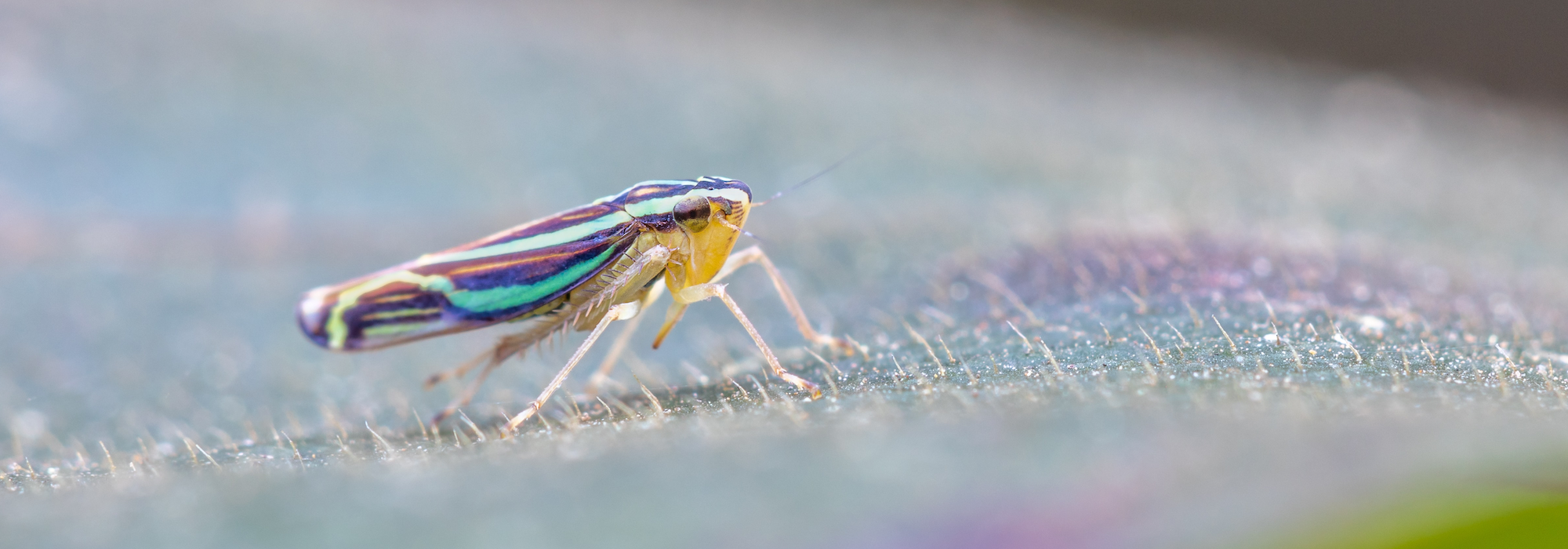Nancy A. Moran
Research
CURRENT RESEARCH
PAST RESEARCH
- Elucidating the molecular bases of species interactions in host-associated bacterial communities
- Role of Gut Microbiota in Honey Bee Health
- Coevolutionary dynamics in an obligate insect symbiosis
- Colonization by a Co-evolved Gut Community
- Dual Obligate Intracellular Symbionts
- Control of Bee Behavior by Stably Engineered Gut Microbial Communities
- Dimensions of Biodiversity: the Gut Microbiota of Bees
- Environmental Genomics of Symbionts in Pea Aphids
- Genomics of Bacterial Symbionts of Plant Sap-Feeding Insects
- Biocomplexity in the Environment
- Bacterial Endosymbiont Diversity in Drosophilla
- Biocomplexity of Symbiotic Bacteria
- Genomic Evolution of Buchnera
- Evolutionary Dynamics of Endosymbiont-Borne Adaption on Aphids
- Molecular Phylogenetics of Sternorrhyncha
- Phylogenetics of Aphids
- Genetically Variable Complex Life Cycles in Heterogeneous Environments
PAST Research Projects

Host-mediated Regulation of Dual Obligate Intracellular Symbionts
(PI is Nancy Moran)
Intimate associations between bacteria and animals have evolved frequently and form the basis for many specialized animal lifestyles. Insects that feed only on sap of vascular plants depend on bacterial partners that live within specialized cells of their insect hosts and that provide nutrients to the insects. These relationships have persisted for hundreds of millions of years, yet little is known about what mechanisms allow both insects and bacteria to rely on each other. This project addresses the question of how these insects tolerate and foster their resident bacterial populations. The project will incorporate experiments on laboratory populations of leafhoppers, which have some of the most specialized symbiotic associations. Typically leafhoppers harbor two different symbiont types that provide complementary sets of nutrients required by the hosts. Investigators will use new genomic and molecular technologies to determine the mechanisms that leafhopper species use to maintain their symbiotic bacteria. To understand the specific host mechanisms that differentiate among bacterial types, investigators will make use of comparisons between related leafhopper species that have different bacteria as symbionts.
This project will give in-depth research experiences to numerous undergraduates at the University of Texas. It will also be the basis for the long-term research program of a postdoctoral researcher who plans future work on insect-bacterial relationships. In addition, leafhoppers are primary vectors of many viral and bacterial diseases of plants, including many major agricultural crops in the United States. For this reason, leafhoppers are some of the most severe insect pests of agricultural systems. Thus, investigators will perform all experiments on two notorious North American pest species. These results will provide new insight into how these pest species interact with microorganisms, including both symbionts and disease organisms.
Selected publications
- Bennett GM, McCutcheon JP, Mcdonald BR, Moran NA. 2015. Lineage-specific patterns of genome deterioration in obligate symbionts of sharpshooter leafhoppers. Genome Biol Evol. 8: 296-301. doi: 10.1093/gbe/evv159.
- Bennett GM, Moran NA. 2015. Heritable symbiosis: The advantages and perils of an evolutionary rabbit hole. Proc Natl Acad Sci U S A. 112: 10169-10176. doi: 10.1073/pnas.1421388112
- Bennett GM, McCutcheon JP, MacDonald BR, Romanovicz D, Moran NA. 2014. Differential genome evolution between companion symbionts in an insect-bacterial symbiosis. MBio 5(5) pii: e01697-14. doi: 10.1128/mBio.01697-14.
- Moran NA, Bennett GM. 2014. The tiniest tiny genomes. Annu Rev Microbiol. 68:195-215. doi: 10.1146/annurev-micro-091213-112901.
- Bennett GM, Moran NA. 2013. Small, smaller, smallest: the origins and evolution of ancient dual symbioses in a phloem-feeding insect. Genome Biol Evol. 5: 1675-1688. doi: 10.1093/gbe/evt118